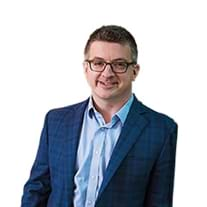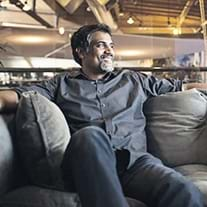Grant Rejection Could Be the Best Thing for Your Career
Four different sciences and engineers share their experiences of transitioning from academia into research-focused private sector positions.

As a doctoral student, microbiologist Natasha Frank was known for challenging assumptions. Her scientific skepticism and technical skills steered more than one experiment to safety when it threatened to tank, and classmates routinely approached her for advice.
Few were surprised, then, when Frank accepted a postdoctoral position at the Pacific Northwest National Laboratory and started down the path of a traditional academic career. Later, as a research scientist at Washington State University, she divided her days between teaching, bench work and grant applications.
It’s not that Frank particularly wanted to become a professor — that’s simply the path graduate students are steered down, she says.
“I’d heard of a few alternate careers in science but they seemed out of reach,” says Frank. “I always thought, how do you get into those things?”
She eventually accepted a microbiologist position at Clorox, reasoning that industry was basically science with added job stability.
But that wasn’t quite true, as she discovered when her department was dissolved. While scanning LinkedIn for new opportunities, she noticed that she met all the qualifications for a position unlike any other on her CV.
She landed the job. Now she works as a patent agent for a large molecular diagnostics company, using her science training to gauge whether new products or services might infringe on existing patents.
“I went from thinking alternative careers were out of reach to having one,” she says.
If Frank’s story seems familiar, that’s because it is. More and more students are graduating from PhD programs — a 41 percent increase between 2003 and 2013 — but ultimately, only 26 percent move into tenured or tenure-track positions in the United States. Others migrate to jobs in business, government or industry.
And still others leave science entirely. Sort of.
Define ‘Anomaly’
Joseph Brown, a senior data scientist, holds a PhD in biomedical sciences and was working for Thermo Fisher Scientific — writing software to analyze peptide behavior in different conditions — when a friend mentioned the strong culture and benefits at nearby Netflix.
On a whim, Brown went online and scanned the company’s job listings. He noticed one for a data scientist to do anomaly detection; that is, to pinpoint a small number of problematic servers among the company’s hundreds of thousands of servers.
“And I thought, you know — it’s kind of similar to my past work, identifying individual peptides or genes that are behaving unusually in a huge swath of the proteome or transcriptome,” Brown says.
Video streaming might seem a far reach from molecular biology, but for Brown the shift was a natural progression of his lifelong interests in statistics and computer programming.
“The math is what really tied everything together,” he says.
Now he works alongside other scientists, most holding doctorates in physics, economics, mathematics or computer science. While few have a life sciences background, it isn’t unheard of, according to Brown.
Rebranding the PhD

MIT-IBM Watson Artificial Intelligence Lab
As it turns out, math isn’t the most critical common denominator. According to David Cox, director of the MIT-IBM Watson Artificial Intelligence (AI) Lab at the Cambridge Research Center.
“A lot of it is training you how to think, how to solve problems, how to be resilient,” Cox says
During his years as a Harvard professor of engineering, computer science, and molecular and cell biology, Cox saw many PhD graduates apply their critical thinking skills to successful careers in consulting. In particular, he says, the routine practice of “analyzing data” is now called “data science” — and it’s in high demand.
“Scientists have been doing that for a long time and didn’t think anything of it, but industry has woken up to the idea that this is an interesting thing to do with business data,” Cox says. “If you know how to wrangle data, run statistically valid and rigorous tests to understand it, that’s a marketable and valuable skill.”
It’s obvious how computer science graduates might leverage that skill, but scientists in fields such as neurology can bank on that, too. The combination of data analysis and specialized knowledge — for example, how the brain and intelligence work — is especially transferable.
“Those skills are often transferable to thinking about AI and structuring experiments to understand what is happening in an artificial system,” Cox says.
Emphasizing Marketable Skills
Sometimes PhDs need help rebranding themselves to emphasize these marketable skills. That’s where physicist Alejandro de la Puente comes in.
“Nowadays, there are fewer options in academia and more options elsewhere,” says de la Puente, who completed a postdoc in physics and now offers career and professional development for STEM graduates at the New York Academy of Sciences.
The pressures that discourage recent STEM graduates from entering academia are cyclical, de la Puente notes. Few tenure positions exist because scientists who land those positions tend to stay a long time and retire late in life. At the same time, university enrollment is up. To deal with the demand, institutions are hiring more adjuncts or non-tenure track professors than in years past.
“When you join as an adjunct, most of your responsibility is teaching,” de la Puente explains. “So it’s a circular thing: You want to stay in academia, but most positions are not tenure track. And if you’re not tenure track, you’re doing more teaching and less research. That limits your chances of getting grants and gives you no chance at tenure.”
Through the Academy’s Science Alliance Initiative, de la Puente teaches scientists how to transfer their skills to nonacademic jobs, how to broaden their reach — and most importantly, how to communicate the technicalities of their work to a broader audience, including job recruiters. The program fills an unmet need for graduate students like Frank, who may hear about alternate careers but have no idea how to pursue one.
Counter Culture

Blizzard Entertainment
How does one land quite so far from the lab, though?
Chacko Sonny, executive producer and vice president at Blizzard Entertainment, the company behind the game Overwatch, knew he wanted to be an engineer years before enrolling in Stanford’s undergraduate and master’s electrical engineering programs. But what he didn’t count on was eventually applying that training to the video game industry.
Strategic by nature, Sonny was working as a consultant for the international strategy firm McKinsey & Company when he realized he craved a change of pace. Specifically, he wanted to use his training in electrical engineering and economics to build and market things, and he wanted those things to be fun and creative. He saw two options: the visual effects industry or the video game industry.
Sonny began applying to every game company he could think of, finally landing an interview with Los Angeles-based Activision. He noticed a “massive” culture divide between the engineering and video game industries.
A Heterogeneous Blend Of Talent
Whereas both his McKinsey and video game colleagues were exceptionally smart, his game industry colleagues were talented across more different dimensions that is typically found in consulting companies. Teams of 200 people, consisting of a third each of artists, designers and engineers, collaborated on projects that demanded a heterogeneous blend of talent.
For one thing, debugging problems becomes a massive ordeal for video games built on millions of lines of code.
“If a character behaves oddly on screen or doesn’t display an expected behavior, you need a structured problem-solving approach to figure out why,” he says.
Games can take hundreds of hours to play to completion, so Sonny used his engineering mindset to hone in on small yet critical errors in the code. The consistent challenge and excitement of the game industry propelled him forward, and before long he’d made a career of it.
Forward Momentum
Like Sonny, Frank has gained valuable, diverse skills since leaving the traditional academic route.
“I get exposed to business development and even finance, regulatory, marketing, communications,” she says.
She’s learned how to calculate prospective revenue and determine if the company can afford a certain license. These challenges keep her engaged, but she hasn’t ruled out a future career shift.
“This experience has created opportunities to do different things, should I decide later on that I might take a different turn.”
Warning: Undefined variable $showit in /var/www/nyas_develop/nyas/public/wp-content/themes/nyas-theme-child/includes/shortcodes.php on line 1802
